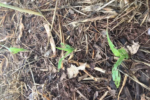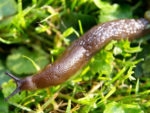Advertise Follow Us
Items Tagged with 'slug control'
ARTICLES
How to Control Slugs in the Early Season
Wet conditions are making potential problems for young crop plants; scout your fields to understand your slug populations
Read More
Label Issue For Metaldehyde Clouds Slug Control Picture
Corn and soybean uses may soon be removed from Deadline labels, but farm experts — fearing a blow to no-till adoption — are lobbying the U.S. EPA to maintain the uses.
Read More








